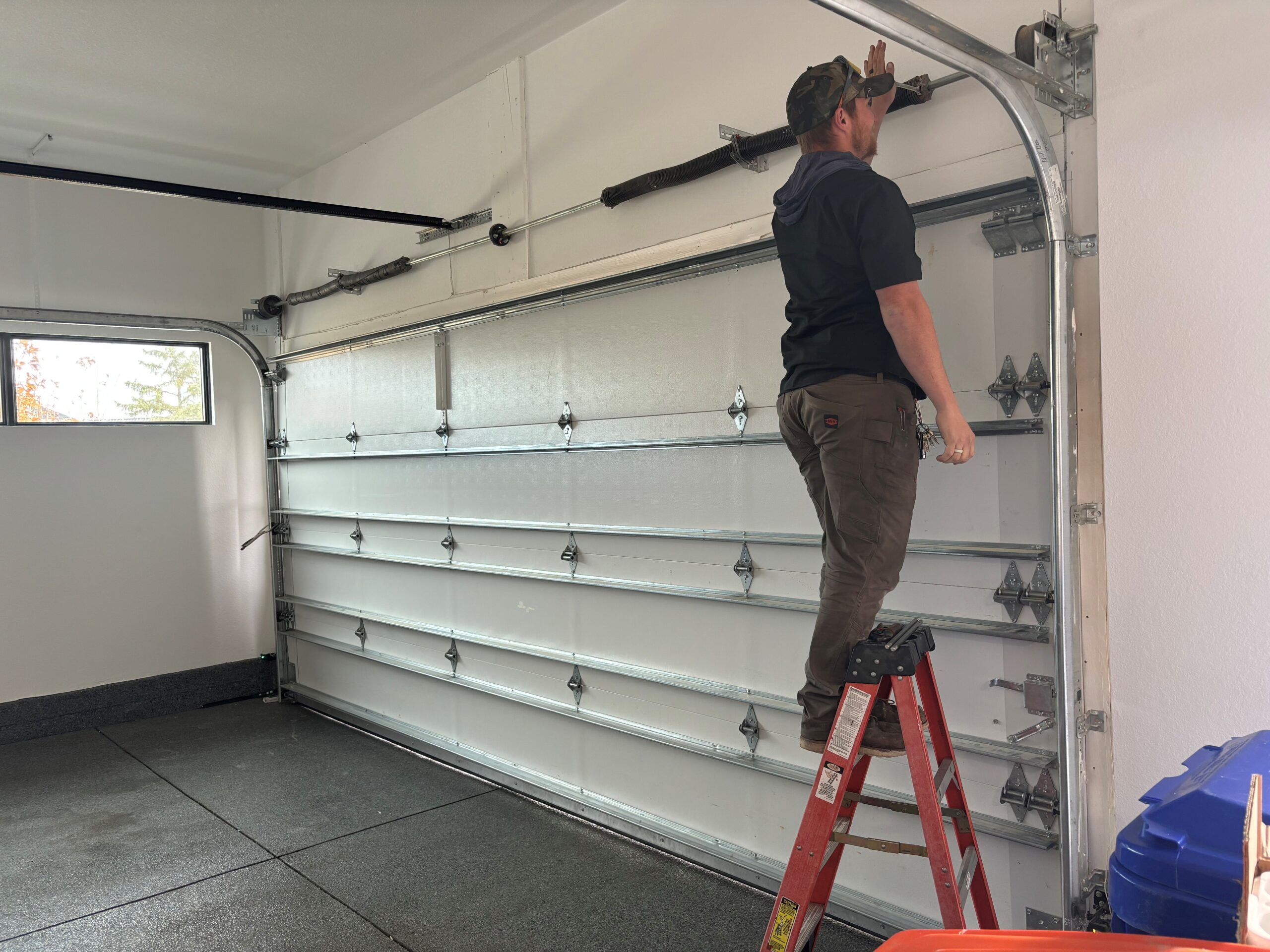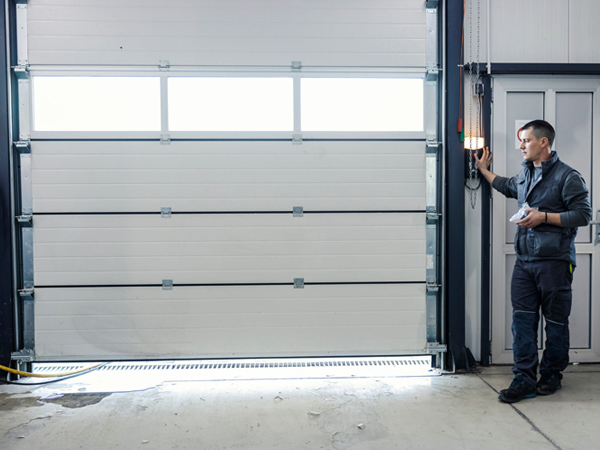Typical Problems and Solutions for Homeowners With Garage Doors
As a home owner, you could encounter numerous usual garage door problems that can interrupt your daily regimen. From malfunctioning openers to noisy procedure, these troubles can be aggravating. Luckily, several options are simple and can save you money and time. Nonetheless, some concerns might call for specialist help. Allow's explore the most regular garage door problems and just how you can tackle them effectively.
Malfunctioning Garage Door Openers
When your garage door opener begins acting up, it can be irritating, specifically if you rely on it daily. You might discover that it doesn't react to your remote or the door opens up and shuts unevenly. If that's not the issue, examine the opener's power source.
Don't hesitate to consult your user manual for troubleshooting suggestions details to your version, or consider calling a specialist if the problem lingers. Taking these actions can help recover your garage door's functionality in no time.
Misaligned Garage Door Tracks
If your garage door isn't opening up or shutting smoothly, misaligned tracks may be the perpetrator. Typical causes include wear and tear or accidental bumps that interfere with the positioning. Taking care of these track problems can recover your door's feature and maintain it running securely.
Reasons For Misalignment
Misalignment of garage door tracks can occur for several reasons, typically resulting in irritating functional problems. One common cause is routine deterioration; gradually, screws and screws can loosen, causing the tracks to change. If your garage door gets bumped or struck, that effect can misalign the tracks also. In addition, changes in temperature level and humidity can create the steel tracks to increase or agreement, causing imbalance. Dust and debris build-up can additionally block the tracks, pushing them out of location. Ultimately, inappropriate installation can bring about relentless placement problems. Determining these causes can aid you recognize why your garage door isn't functioning efficiently.
Dealing With Track Problems
Fixing track concerns with misaligned garage doors needs a mindful technique to assure smooth operation. Initially, inspect the tracks for bends or particles that might block activity. Utilize a level to examine if the tracks are directly; if not, gently tap them back into placement with a rubber mallet. Next off, confirm the braces holding the tracks are limited; loose screws can create misalignment. If the tracks are substantially harmed, take into consideration replacing them. Once aligned, oil the tracks with a silicone-based spray to lower rubbing. Test the garage door's procedure to validate it opens up and shuts efficiently. Routine upkeep will certainly assist avoid future track problems and keep your garage door operating correctly.
Broken Springs
When your garage door instantly refuses to open or shut, it's typically due to damaged springtimes. These springs birth the weight of the door, making it easy for you to raise or reduce it. If they snap, you'll observe that your door feels heavy or will not move in any way.
To verify the issue, aesthetically examine the springtimes for voids or breaks. If you think they're damaged, don't attempt to repair them on your own, as they're under high tension and can cause injury. Rather, call a specialist who can safely change the springtimes.
Normal upkeep can help prevent spring failing, so maintain an eye on their condition and oil them regularly. If you're experiencing frequent spring problems, think about upgrading to higher-quality springs that can stand up to even more damage. This aggressive method can conserve you money and time over time, ensuring your garage door runs efficiently.
Noisy Garage Doors
After dealing with concerns like broken springtimes, you may observe one more typical problem: loud garage doors. If your garage door squeaks, rattles, or groans, it can be quite aggravating, specifically if it's interrupting your peace. The noise often comes from worn-out rollers, loosened hardware, or lack of lubrication.
If they're filthy or harmed, cleaning up or changing them can considerably lower noise. Don't fail to remember to oil the moving parts with a silicone-based spray or garage door lube.
If your door still seems like a dinosaur, take into consideration seeking advice from a specialist. Regular maintenance can protect against noisy garage doors and prolong their life expectancy, ensuring you delight in a quieter, smoother procedure.
Garage Door Remote Issues
Many Get More Information house owners experience aggravation with garage door remote problems at some factor. If your remote isn't working, the initial step is to examine the batteries. Weak or dead batteries are frequently the culprits. Change them and see if that addresses the problem. If the remote still won't function, try reprogramming it. Consult your garage door opener guidebook for particular guidelines.
Occasionally, disturbance from various other electronic devices can affect your remote. Look for any type of nearby tools that could be creating a signal disruption. If that doesn't aid, inspect the remote for physical damage, like cracks or broken buttons.
Another common concern is distance; you might merely be as well much from the garage door. They can diagnose and repair any type of hidden troubles with your garage door system.
Climate Stripping Troubles
If you notice drafts, water leaks, or increased power bills, your garage door's climate removing could be worn. Comprehending how to detect indications of wear and recognizing installation pointers can assist you keep a proper seal - garage doors nanaimo. When it's time for a substitute, you'll have lots of options to pick from
Indicators of Wear
As you use your garage door over time, the weather removing can start to reveal indications of wear, which is important to deal with. If you notice the stripping is fragile or tearing away from the door, it's time to take activity. You might likewise locate that your garage door doesn't secure correctly, leading to enhanced power prices or insect troubles.
Installment Tips
When you observe use on your garage door's weather removing, attending to the setup can make a substantial distinction. Verify you have the appropriate type of weather stripping for your garage door. Measure the door properly to reduce the removing to the ideal size. Clean the surface area where you'll use the climate stripping, removing any type of dirt or particles to guarantee a strong bond. Make use of a premium glue or comply with the supplier's guidelines for setup. Make certain it's lined up appropriately to secure gaps successfully. Routinely inspect the installation for any indicators of damages or detachment. By taking note of these details, you'll improve your garage door's insulation and protect your home from the elements.
Substitute Options
While you might have mounted your garage door's weather condition removing properly, damage can still bring about issues that demand replacement. If you observe drafts, moisture, or bugs entering your garage, it's time to contemplate brand-new weather stripping. Look for options like vinyl or rubber materials, which provide better insulation and sturdiness. Step your door's measurements accurately to guarantee a proper fit, and select self-adhesive strips for easy setup. If i thought about this you prefer an even more robust remedy, assume concerning employing a professional to mount a brand-new threshold seal. Regularly checking and changing weather condition removing not only boosts your garage's power have a peek at this website effectiveness however additionally protects it from damage. Do not wait until you face bigger concerns-- act now!
Sensor Breakdowns

Begin by checking the sensor positioning. Make sure both sensing units face each other and are level.
If the sensing units appear undamaged however the door still won't shut, it might be time to change them. You can find compatible sensing units at your regional hardware store. Just remember to adhere to the supplier's instructions for installation. With a little troubleshooting, you can typically deal with sensing unit concerns and obtain your garage door working smoothly again.
Regularly Asked Questions
Just how Typically Should I Preserve My Garage Door System?
You need to preserve your garage door system a minimum of twice a year. Routine checks for wear, lubrication of relocating components, and changing the tracks can maintain it functioning smoothly and extend its life expectancy substantially.
Can I Mount a Garage Door Myself?
Yes, you can mount a garage door on your own, but it needs careful planning and the right tools. Make certain you comply with the producer's guidelines closely and consider security preventative measures to stay clear of accidents during installment.
What Is the Typical Lifespan of a Garage Door?
The average lifespan of a garage door is usually 15 to 30 years, depending on materials and upkeep. If you take care of it well, you can optimize its durability and delight in reliable efficiency.

Exactly how Do I Pick the Right Garage Door?
When you select the best garage door, consider products, style, and insulation. Believe about your home's style, budget plan, and upkeep requirements. Do not fail to remember to examine neighborhood regulations and power performance rankings for optimal efficiency.
Are There Energy-Efficient Garage Door Options Available?
Yes, there are energy-efficient garage door choices readily available. You can pick insulated doors, which assist preserve your garage's temperature level, or search for designs with a high R-value to boost energy effectiveness and minimize energy prices.